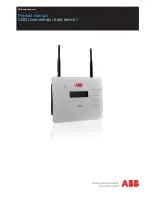
© National Instruments
|
7-39
In addition, a counter’s Internal Output, Gate or Source can be routed to a different counter’s
Aux. A counter’s own gate can also be routed to its Aux input.
Some of these options may not be available in some driver software.
Counter
n
A, Counter
n
B, and Counter
n
Z Signals
Counter
n
B can control the direction of counting in edge counting applications. Use the A, B,
and Z inputs to each counter when measuring quadrature encoders or measuring two pulse
encoders.
Routing Signals to A, B, and Z Counter Inputs
Each counter has independent input selectors for each of the A, B, and Z inputs. Any of the
following signals can be routed to each input:
•
RTSI <0..7>
•
PFI <0..15>
•
PXI_STAR
•
PXIe_DSTAR<A,B>
•
Analog Comparison Event
Routing Counter
n
Z Signal to an Output Terminal
You can route Counter
n
Z out to any RTSI <0..7> terminal.
Counter
n
Up_Down Signal
Counter
n
Up_Down is another name for the Counter
n
B signal.
Counter
n
HW Arm Signal
The Counter
n
HW Arm signal enables a counter to begin an input or output function.
To begin any counter input or output function, you must first enable, or arm, the counter. In some
applications, such as a buffered edge count, the counter begins counting when it is armed. In
other applications, such as single pulse-width measurement, the counter begins waiting for the
Gate signal when it is armed. Counter output operations can use the arm signal in addition to a
start trigger.
Software can arm a counter or configure counters to be armed on a hardware signal. Software
calls this hardware signal the Arm Start Trigger. Internally, software routes the Arm Start Trigger
to the Counter
n
HW Arm input of the counter.
Summary of Contents for 6368
Page 1: ...PXIe 6368...
















































